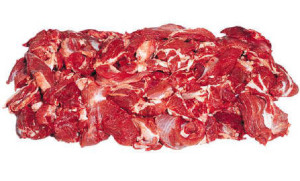Within Ireland, the Food Safety Authority (FSAI) today stated that campylobacteriosis continues to be the most commonly reported foodborne illness in Ireland with 10 times more cases of campylobacteriosis being reported than salmonellosis.
 Some 2,288 cases of food poisoning due to Campylobacter were recorded in 2013, compared to over 2,600 in 2014.* The FSAI noted the European Food Safety Authority (EFSA) and European Centre for Disease Prevention and Control (ECDC) annual figures for foodborne illness published today which suggests that the campylobacteriosis figures across Europe have stabilised, but that is not the experience in Ireland.
Some 2,288 cases of food poisoning due to Campylobacter were recorded in 2013, compared to over 2,600 in 2014.* The FSAI noted the European Food Safety Authority (EFSA) and European Centre for Disease Prevention and Control (ECDC) annual figures for foodborne illness published today which suggests that the campylobacteriosis figures across Europe have stabilised, but that is not the experience in Ireland.
The FSAI states that the figures recorded by the Health Protection Surveillance Centre in Ireland are the highest since campylobacteriosis became legally notifiable in 2004 and requires cross industry and consumer responses to be undertaken to tackle the problem. The FSAI would support setting a microbiological hygiene standard for poultry meat at European level. This would create a maximum tolerance level for Campylobacter in poultry which could be reviewed over time. A similar approach was adopted as part of European controls for Salmonella which proved successful.
According to Dr Wayne Anderson, Director of Food Science and Standards, FSAI, salmonellosis was a major issue in Ireland 15 years ago, but due to the efforts of the Irish industry to control and reduce Salmonella contamination in eggs and poultry there has been a radical decrease in its incidence and impact on public health.
“A similar effort is now required to reduce Campylobacter infections which can be serious and life threatening in vulnerable people. For Salmonella control, regulations were put in place which set a maximum tolerance for Salmonella in raw poultry amongst other controls. There is a need to set similar tolerance levels for Campylobacter and this would drive new control measures throughout the food chain to reduce its occurrence,” he says. “If the industry from producer right through to retailer comes together to put in specific measures to reduce the level of Campylobacter on poultry like it did for Salmonella, it would have a positive impact on the number of people becoming sick,” he said.










